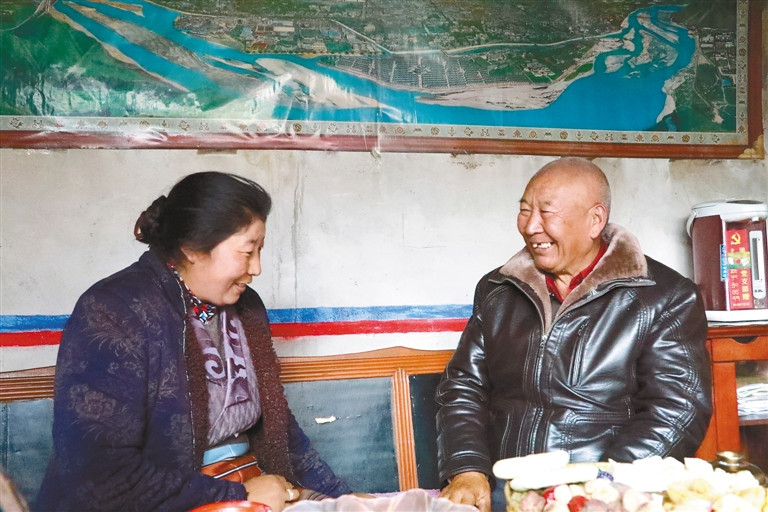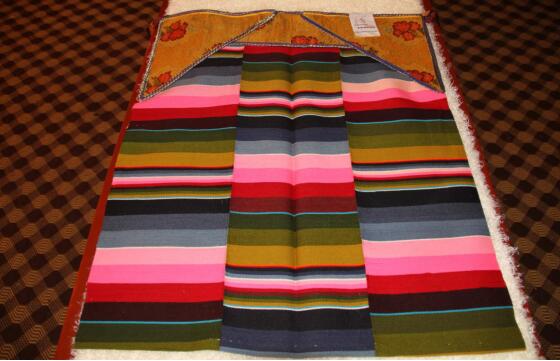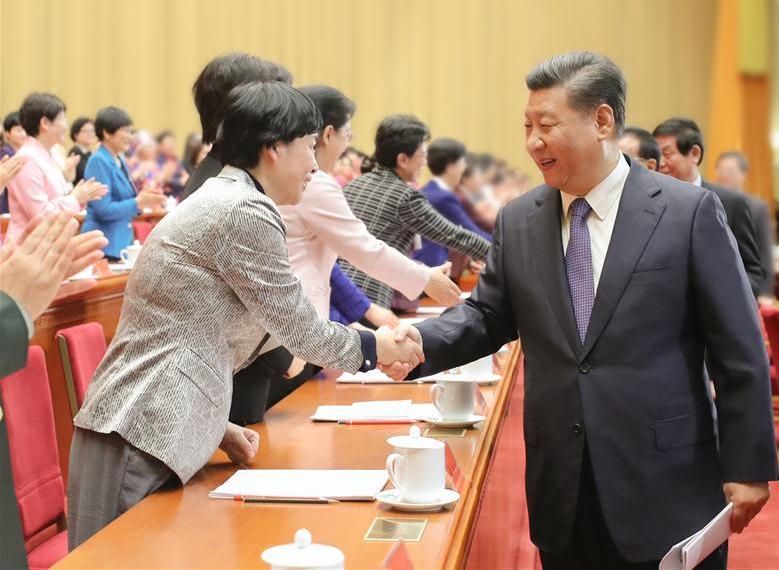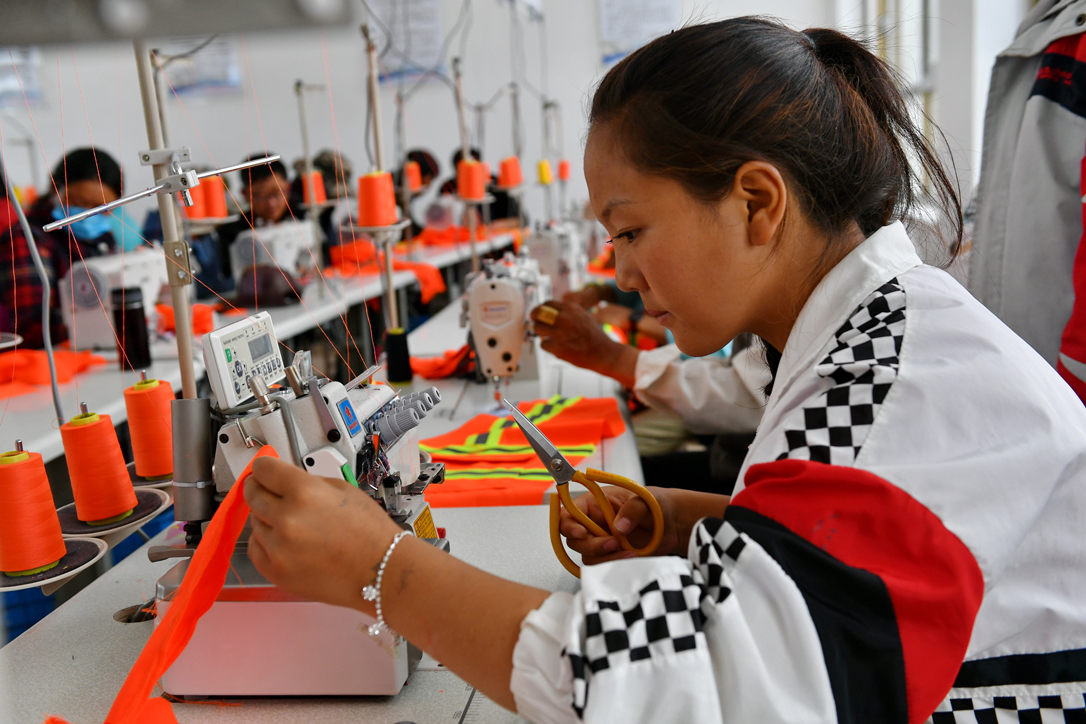Rainbow-like Tibetan apron
The bangdian is a special symbol on Tibetan women’s clothing. It is actually a kind of colorful, woolen fabric horizontally knitted, which is raw material for Tibetan robes. Later, it became a favorite adornment worn by Tibetan women at their waists, decorative and resistant to cold, and it has gradually become synonymous as a Tibetan apron. Tibetans use bangdian materials to make women’s waistcoats, aprons, and satchels or to inlay the edges of Tibetan robes. Nowadays, Tibetans also use them to decorate their living room walls. In Tibet, Jedesho Town in Gonggar County, Lhoka City is the main area for producing Tibetan aprons, and it is known as the “hometown of bangdian”.
Producing bangdian is a complex process. The rawest material is fine sheep wool. After a process of combing the wool and twisting it into thread, it is put on a weaving machine and woven into a pattern. Then it is dyed repeatedly, rubbed, and dried, and finally it is completed. Of these processes, the dyeing uses a stone and plant dye prepared through a special Tibetan folk craft. The wool thread can be dyed into more than 20 bright colors, and it will never fade. Twisting the wool into thread is a time-consuming and laborious task. Women usually twist it into thread while men usually operate the weaving machines.
Notes: In Lhasa, capital of southwest China’s Tibet, and its surrounding areas, Bangdian is usually worn by women as a symbol of maturity; however, in Shigatse and some other areas, Bangdian is worn by both girls and adult women and there are no differences in colors and pattern, only in size.
Tibet Stories

Samdrup: from a shepherd to a wealthy “lead sheep”
Speaking of old Tibet, Samdrup can’t help pouring out all his bitterness.
Editor’s Choice
- Tibet's cultural industry sees sound development
- 11th Panchen Lama: abolition of serfdom engraved in the minds of the people
- Eco-friendly toilet to be set up at 7,028m on Mt. Qomolangma
- Tibet establishes HIV/AIDS prevention, treatment association
- Panchen Lama: democratic reform an important turning point for Tibetan Buddhism




